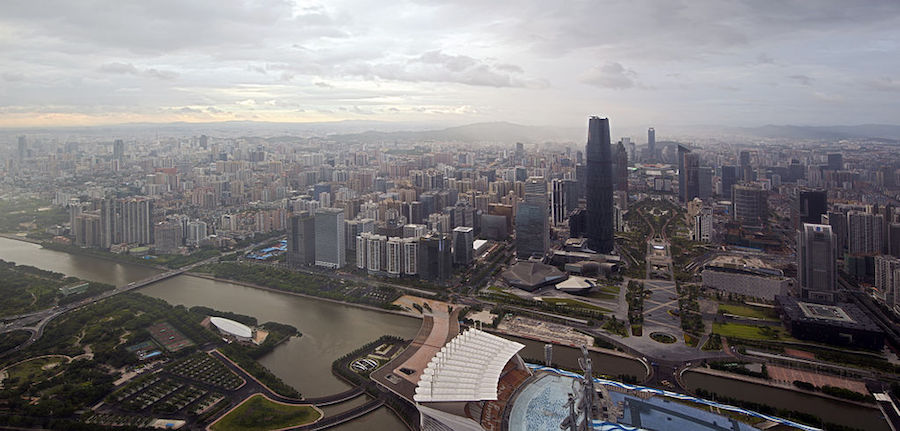Walking in the south China city of Guangzhou in 1982, the tallest structures I saw were out-of-date, poorly air-conditioned hotels. Neighborhood life included outdoor barber shops and small land parcels farmed with oxen-powered plows, not far from the city center. You didn’t need a long ride out of town to see the rural back country. And few opportunities existed for young Chinese to see the world.
Clearly a lot has changed. With the Trump administration likely to announce a trade deal in the coming weeks, now is a good time to take a look at China’s current role in the global economy and the construction services market.

Through much of the 1980s, Japan’s successful international businesses fascinated the world. What has unfolded since then in the People’s Republic of China is even more astonishing. By promoting private business initiatives combined with huge public infrastructure investment, Beijing has pulled more of its people out of poverty during the last quarter-century than any government ever and has become the world’s low-cost factory and supply house. Its economic activity and investment have helped world economies, including the U.S. And it has been a source of inexpensive goods and commodities.
China also has become one of the world’s dominant engineering and construction powers, mostly through various state-owned firms. Its notable economic “conquest” of Africa as a contractor and source of finance has helped give the continent needed infrastructure. Chinese companies now work similarly in South and Central America. Last year, Panama opened many eyes by awarding a Chinese team a $1.4-billion Panama Canal bridge contract after a visit by President Xi Jinping. Agence France-Presse called it part of “China’s effort to extend political and economic influence.”
But the Xi regime’s ambitious seven-year-old Belt and Road program to build global road and port infrastructure is slowing. Debt and a cooling domestic economy forced China to cut its international outbound and infrastructure investment by $100 billion to $179 billion from 2017 to 2018, Chinese media report. The nation’s slowing domestic economy, high debt and falling overseas investment is troubling. With its future unclear, several global businesses are finding other sources of goods and services to support their own supply chains.
The Domestic Infrastructure
China’s own industrial, transportation and energy infrastructure has vaulted into the top ranks in several categories with investment continuing and helping to keep the national economy growing fast. Few countries can move large numbers of people by rail the way China can. Some of what was built in the last 25 years has carried a stiff environmental price. While China’s leaders have in more recent public actions prioritized environmental and industrial safety, China remains one of the great global polluters, along with the U.S., despite ambitious programs to build renewable energy sources.
Few people expect a trade deal with Washington, no matter its wording, to curtail China’s military ambitions and tradition of intellectual property theft. Nor will it open a closed and secretive Communist style of governing. Tied to the upside of capitalism and individual wealth accumulation is the downside of even more political and religious repression.
In the U.S. and other democratic nations, economic policy is debated, fought over and practiced in fits and starts. That is democracy’s disadvantage when competing against state-controlled economies, royal family enterprises and practitioners of economic statecraft. Lest we want to see what China’s complete dominance in the Pacific would mean, the U.S. would be wise to maintain a strong presence through its allies there. Reviving the Trans-Pacific Partnership, which the Trump Administration foolishly set aside, is a critical step.
China will remain formidable for generations. But the Chinese Communist party and its leader are not infallible. They would be wise to take the opportunity of the prospective U.S. trade pact to learn what the U.S. and other world powers already know: The line between development assistance via loans, and exploitation, is thin and easily crossed. Forgetting that can produce some expensive lessons.
Richard Korman is deputy editor of ENR and ENR.com and can be reached at kormanr@enr.com.
If you have an idea for a column, please contact Viewpoint Editor Richard Korman at kormanr@enr.com.





